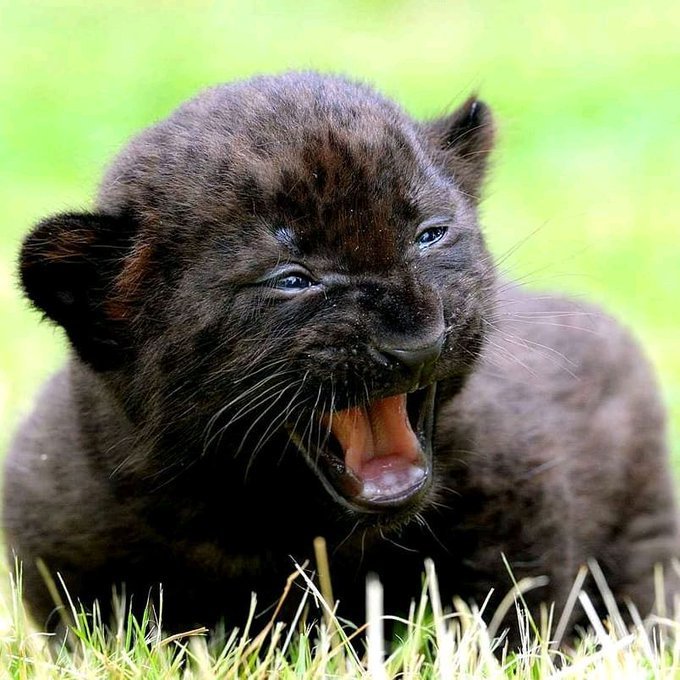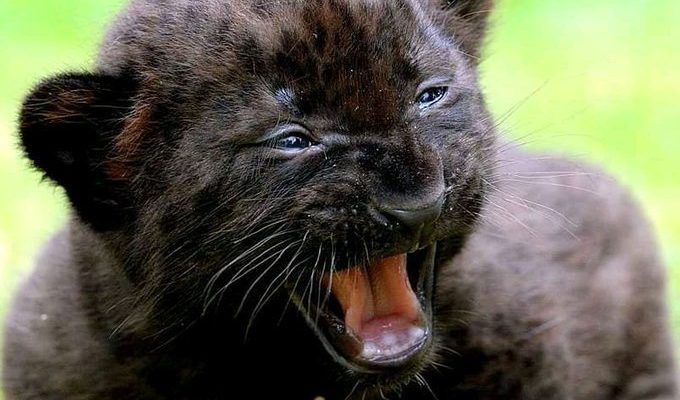
Let’s sip our coffee and dive into the life of a panther mom, who’s not just out there hunting but also building a home for her little ones. Imagine a cozy den tucked away under a thicket—this is where the adventure begins. In this article, we’ll explore everything from the early days of cubs to how they learn to hunt and survive on their own. So, if you’re curious about these fascinating big cats and how they nurture their young, you’re in the right place!
Panther Reproduction: The Start of a New Family
Panthers, particularly the Florida panther, are generally solitary animals. However, the mating season brings them together. It’s an interesting time: males and females will engage in courtship rituals that may last a few days. Here’s the thing—once mating occurs, the female will carry her cubs for about 90 to 95 days before giving birth. That’s almost three months!
During this time, the mother starts preparing for her cubs’ arrival. She’ll find a secure spot—often a secluded den in thick vegetation or a rocky outcrop—where she can safely raise her young. The environment plays a huge role here. A hidden den protects the cubs from predators and harsh weather. Honestly, it’s like finding the perfect nursery, but in the wild.
When the cubs are born, they’re typically blind, helpless, and covered in spots. They rely entirely on their mother for warmth, food, and safety. It’s a vulnerable time, but the mother is dedicated. She has to ensure that this tiny family thrives amidst the challenges of the wild.
Caring for the Cubs: A Mother’s Role
Once the cubs are born, the mother panther’s role becomes even more critical. She nurses them for the first few months, providing all the nutrients they need to grow strong. You might be wondering, how does she manage to hunt while caring for her young?
Mother panthers are incredibly resourceful. They will often leave their cubs in a safe spot while they venture out to hunt. The cubs, snuggled up together, remain safe in the den. When the mother returns, she’ll regurgitate food for them. Sounds a bit icky, right? But it’s a clever survival strategy. This way, the cubs get to enjoy a meal even when they’re still too small to hunt for themselves.
As the cubs grow, the mother begins to teach them important skills. This includes everything from recognizing danger to learning how to stalk prey. It’s a gradual process that requires patience, just like teaching a child to ride a bike.
Social Dynamics: Siblings and Their Bond
Panther cubs are not just learning from their mother; they also bond with each other. These sibling relationships can be strong and beneficial. Cubs often play together, which is crucial for their physical and social development. During these play sessions, they learn to use their claws and develop their hunting skills.
It’s interesting to watch how these interactions unfold. They wrestle, chase, and even practice ambushing each other. This playful behavior mimics real hunting scenarios, helping them become well-rounded predators when they eventually set off on their own.
However, these sibling bonds are not permanent. Panther mothers typically wean their cubs after about 2 to 3 months, but they stay with them for up to a year. By that time, the cubs are ready to start their own journeys, leaving the safety of their mother’s care to carve out their own territories.
The Transition to Independence
Speaking of independence, one of the biggest challenges for young panthers is learning how to fend for themselves. After about 6 months, the cubs start accompanying their mother on hunts. This is where the real learning happens. They watch her closely, observing every move—how to stalk, how to pounce, and even how to share a meal.
Eventually, at around 1 year old, the mother will start to push them away. The message is clear: it’s time to spread their wings. This transition can be tough. Panthers are solitary creatures by nature, but leaving the familiar territory and venturing out alone is a crucial step toward adulthood.
While the young panthers may feel lost at first, they rely on the skills their mother instilled in them. Each one starts exploring its own range, seeking out food and shelter. It’s a time of growth, filled with new experiences that will shape their future as powerful predators.
Survival Skills: Learning to Hunt
Hunting is not just a matter of instinct; it requires practice and strategy. In the wild, young panthers will have to learn to hunt a variety of prey, from deer to smaller animals like rabbits and rodents. Initially, they may struggle, but with persistence and a dash of trial and error, they refine their hunting techniques.
You might be surprised to learn that young panthers can take several months to master the art of hunting. They often mimic their mother, using the skills she taught them. Timing, stealth, and patience are vital. Each successful hunt boosts their confidence and hones their abilities.
Once they are capable of catching their own food, the young panthers demonstrate their adaptability in the wild. Their ability to adjust their hunting methods based on the availability of prey adds to their survival. It’s nature’s way of ensuring that only the fittest thrive.
The Importance of Territory
As the young panthers grow into adulthood, establishing their own territory becomes essential. Territory is not just a part of their identity; it’s vital for their survival. Panthers are territorial animals, so they must find a space that provides enough resources—food, shelter, and mates.
Typically, males will seek larger territories than females, and they’ll mark their new territory with scent markings. This helps communicate their presence to other panthers, letting them know that this area is taken. Striking out on their own can be intimidating, but it’s a necessary step toward independence and adulthood.
In some cases, young panthers may overlap with their mother’s range for a while before fully establishing their own territory. This gradual transition helps them adjust to living alone while still having a safety net nearby.
Panthers raise their young in ways that are both fascinating and incredibly resourceful. From finding the perfect den to teaching their cubs how to hunt, every step in the process is critical for survival. These big cats are not just skilled hunters but incredible parents, navigating the challenges of the wild with grace and intelligence.
As the young panthers grow and leave their mother’s care, they carry with them the lessons learned during their formative years. It’s a beautiful circle of life. Their journey into adulthood reflects the importance of nurturing, teaching, and learning, traits that are as relevant in the wild as they are in our own lives.
So, the next time you think of a panther, remember there’s a whole story behind those dark eyes and sleek movements—one that is filled with love, dedication, and the relentless pursuit of survival.

